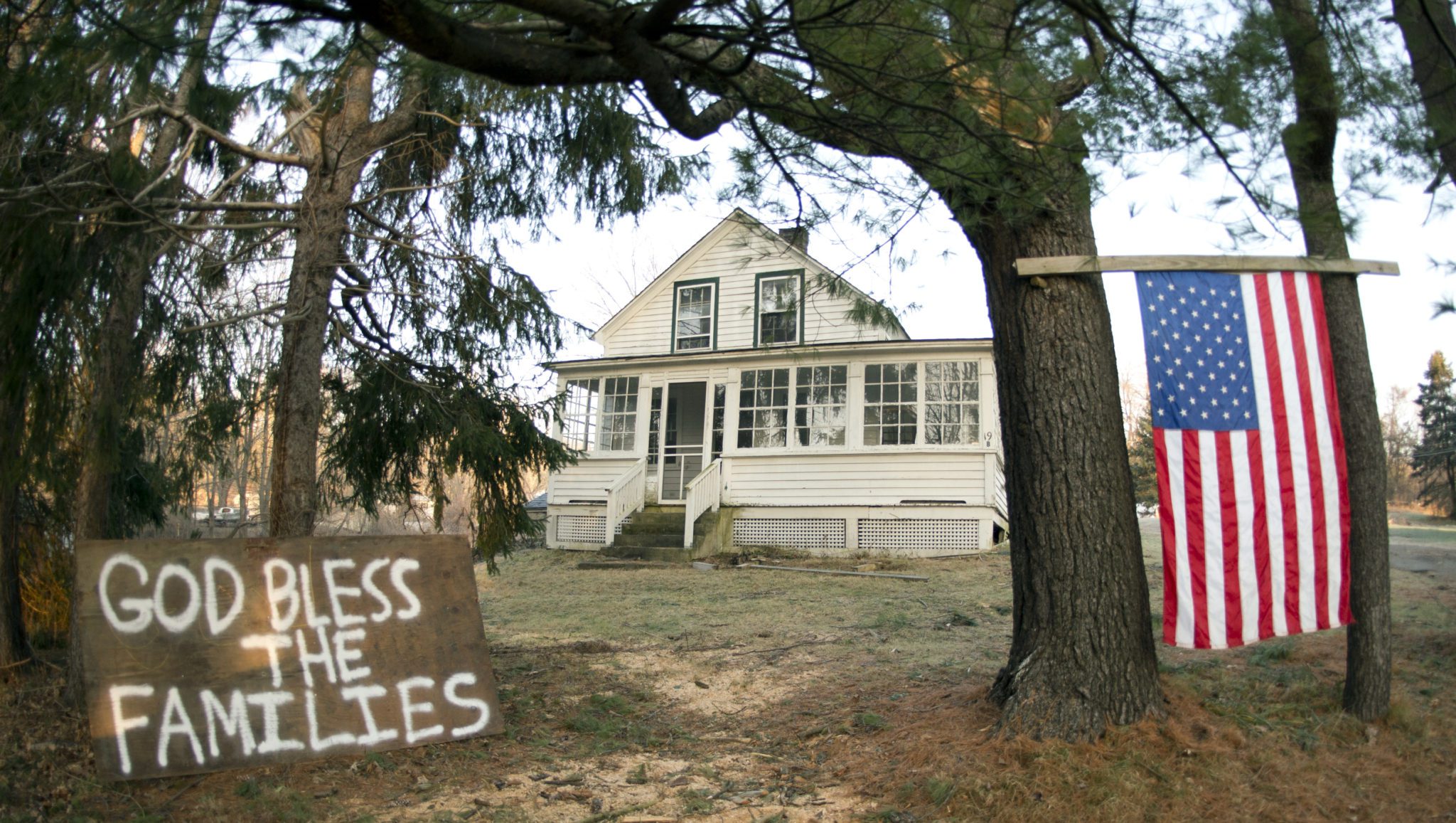Newtown’s Grief

Newtown, Connecticut, was born in earnest in 1709, when four proprietors convened to divide the land of a yet-unincorporated New England farming village. They apportioned 48 four-acre plots for farm houses and reserved a 49th for a town minister. They sketched a road running north and south and 132-feet wide, which would eventually become Main Street. On a hill in the southwest corner of the village, they set aside one and a half acres for a cemetery.
My mother grew up in Newtown. The population then was about 12,000. She and my grandmother both attended Sandy Hook Elementary School. I grew up in a small adjoining town opposite the county line.
The world knows Newtown for the shooting that occurred nine years ago today at Sandy Hook Elementary School. Media descriptions of the community were necessarily reductive; the New York Times described Newtown as “a rural community,” a “postcard-perfect New England town where everyone seems to know everyone else.”
Newtown sits along the northernmost edge of Fairfield County, which is the state’s wealthiest district and the weekend home of Manhattanites who spend the week toiling in the fields of high finance. While it is wealthier than many American towns—Connecticut is generally a well-to-do state and its small towns often are no exception—Newtown’s per capita income is about half that of Fairfield County boomburbs like Darien, New Canaan, and Greenwich. With a population south of 30,000 and a downtown that dates to the Revolutionary era, Newtown has much more in common with the sparsely populated suburbs of Litchfield County than the patrician metros along Connecticut’s southwestern border.
It is a quiet place. Off its Main Street is a smattering of barns and hills, wooded forests, and Rockwellian scenes of American boyhood: ballfields and fishing holes, diners and ice-cream parlors. Go to Blue Colony Diner and find grizzled old men drinking coffee in solitude. Sit atop a stone wall off Hawley Road and hear the wind wisp through the evergreens in Ram Pasture. Drive through town center and find colonial archways and porticos, a town hall that smells like aged brick, and a Revolutionary-era flagpole seated in the dead-middle of Main Street.
It is still a church-going town. In an age of cratering Mass attendance, Newtown’s St. Rose of Lima Catholic Church regularly fills its Sunday services to capacity. On the evening of the shooting, after 20 children and six staff died at Sandy Hook Elementary, grieving families and townsfolk turned not to the cameras but the church, filling the pews of St. Rose with weeping and anguish.
The people of Newtown are deeply humane. They are mild by temperament. When Newtown police entered Sandy Hook Elementary on December 14, they found the lifeless bodies of 20 children, six staff, and the shooter. They walked classroom to classroom, gathering the scarred and terrorized survivors. The police instructed surviving students to close their eyes and walk single file down the hallway, passing blindly by the unspeakable, ungodly carnage that lay at their feet. The students were brought to the Sandy Hook Fire Department. Parents waited anxiously in the December cold at the firehouse as children one by one exited the building. Some waited minutes, others hours. Twenty were told their children would not be coming home.
Neil Heslin’s only son, six-year-old Jesse, was killed by Adam Lanza. With every reason to curse, scorn, and despise the family of his son’s killer, Heslin said this:
I personally don’t hold the family responsible for Adam’s actions. My heart goes out to the family the same way it does to the other victims’ families….[Peter Lanza] was a father who lost a son as I did, and I said that last year. And he’s carrying a heavier cross and a bigger burden than I am. Our loved ones will be honored and remembered for the tragedy and as victims. His son will be remembered as a massacre killer.
If you go to the southwestern part of town, the old cemetery still sits across from the pasture. It is quiet there. At the bottom of the hill on the southeast corner the headstones date to 1754. Tall obelisks, crumbling crosses, and mausolea dot the landscape. The hill is steep. As you climb its face you traverse decades of town history. Rusted gates cordon off the family plots of Newtown’s 19th-century aristocracy. You get higher, passing the parents and grandparents of Newtown’s living residents. You approach the top. In the northernmost corner, looking down over the town beneath, you see a group of headstones set back near the woods. A small army of dolls and stuffed animals keep watch. The graves of seven children, killed on December 14, 2012.
Comments